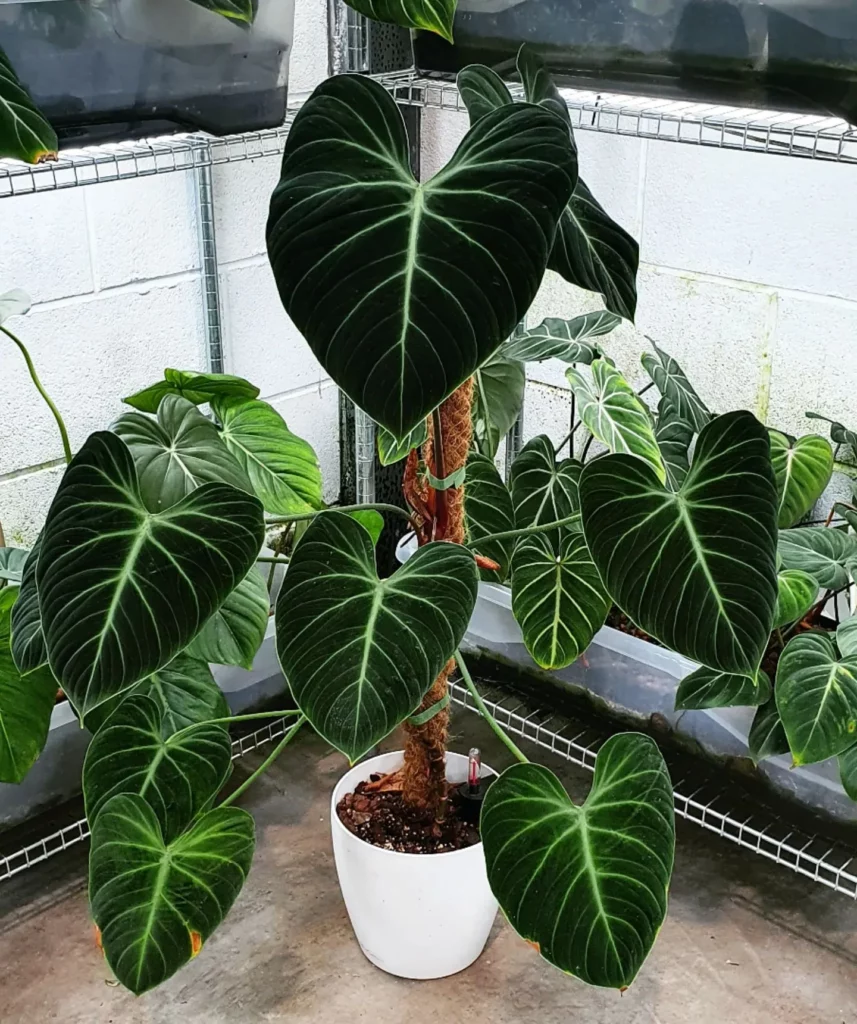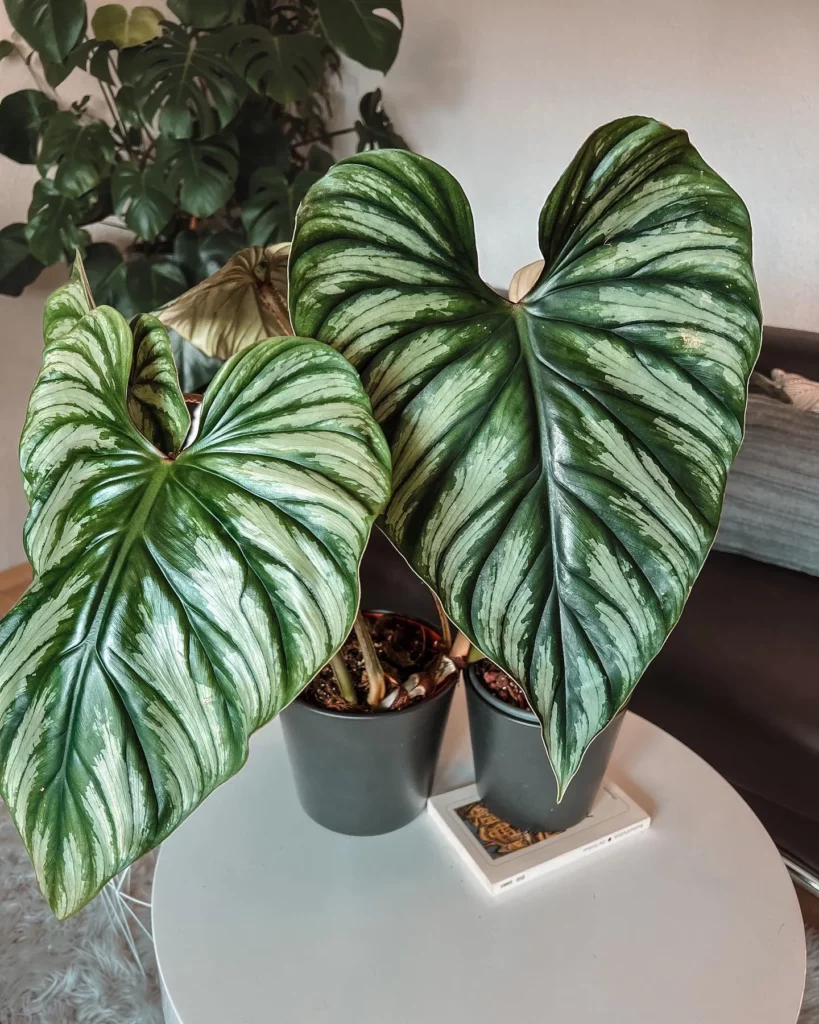Are you curious about the growth rate of philodendrons? Philodendrons are renowned for their fast growth, making them popular choices for indoor and outdoor gardens alike. Whether you’re a plant enthusiast or a beginner gardener, understanding the growth rate of philodendrons can help you cultivate these beautiful plants successfully.
Philodendrons have an impressive growth rate, with some species capable of growing 2 to 4 inches per week during their active growing seasons. This rapid growth makes them an excellent choice if you’re looking to add lush greenery to your space quickly.
When it comes to philodendrons, there are two primary types to choose from: vining and non-climbing varieties. Vining philodendrons, like the popular Heartleaf Philodendron (Philodendron hederaceum), can grow several feet long and typically require support to climb. On the other hand, non-climbing philodendrons, such as the Xanadu Philodendron (Philodendron xanadu), grow upright and are ideal for containers, making them perfect for indoor environments.
Philodendron Care Tips for Rapid Growth
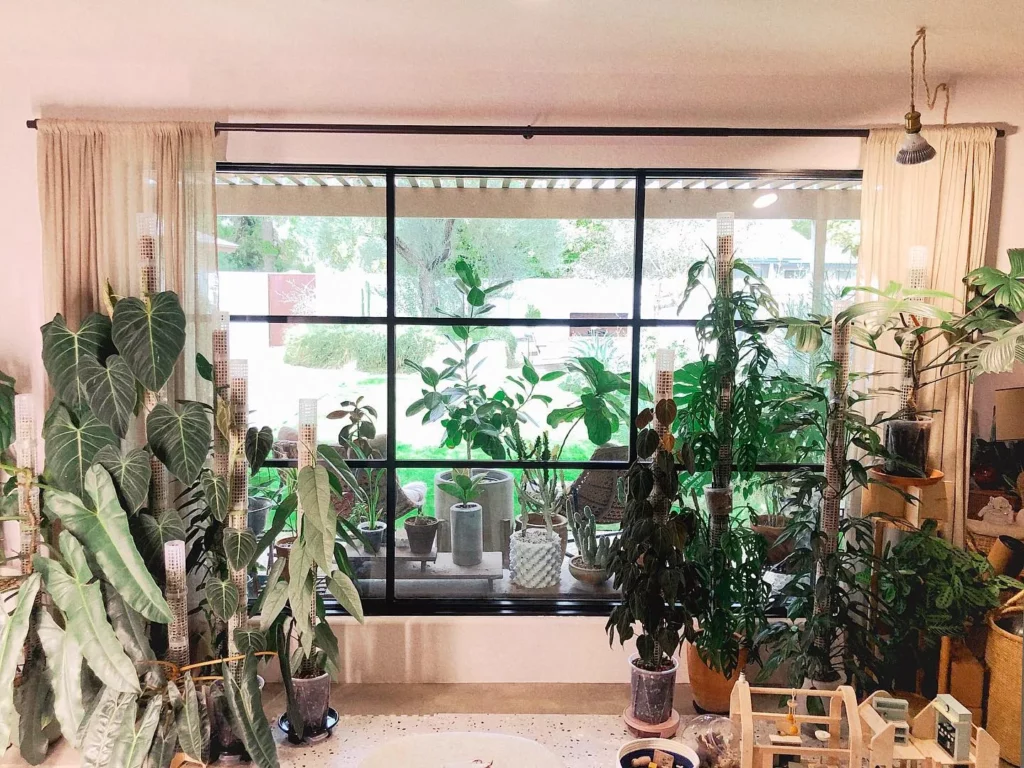
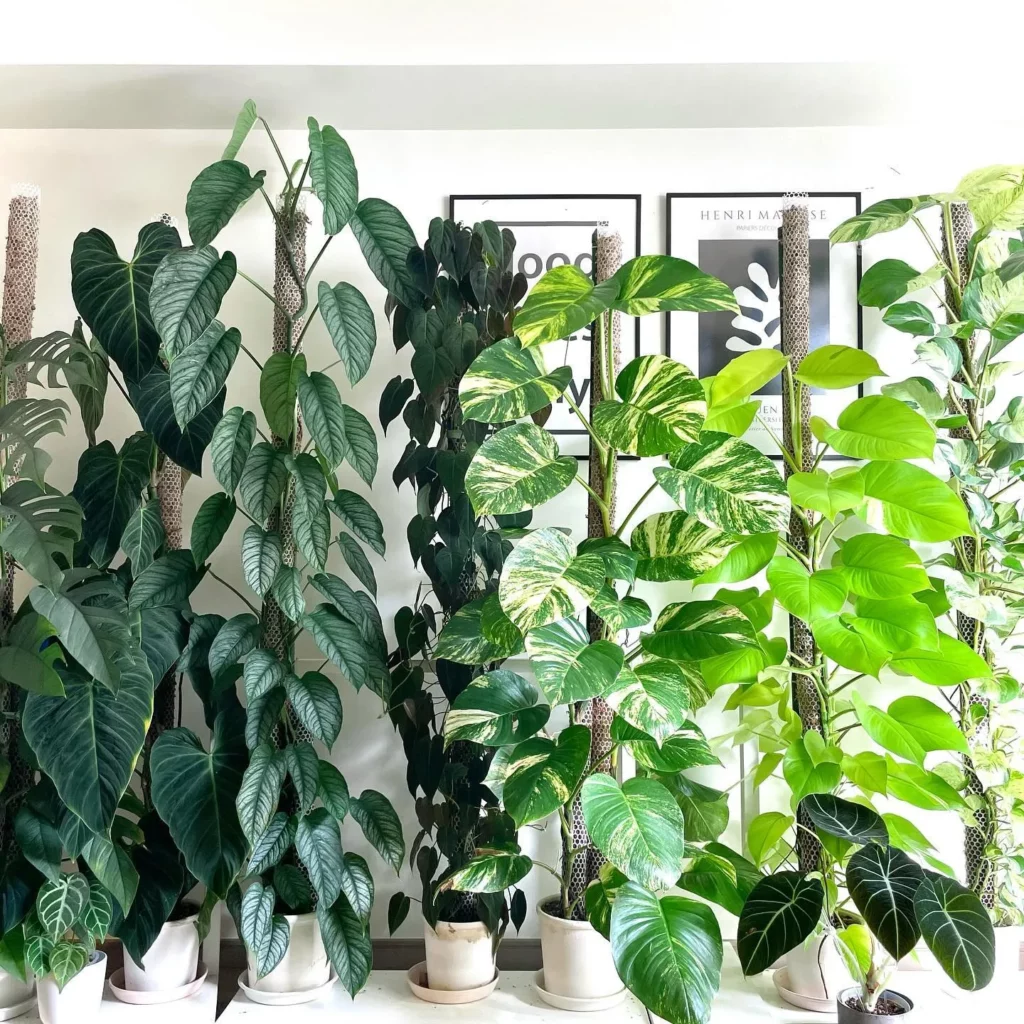
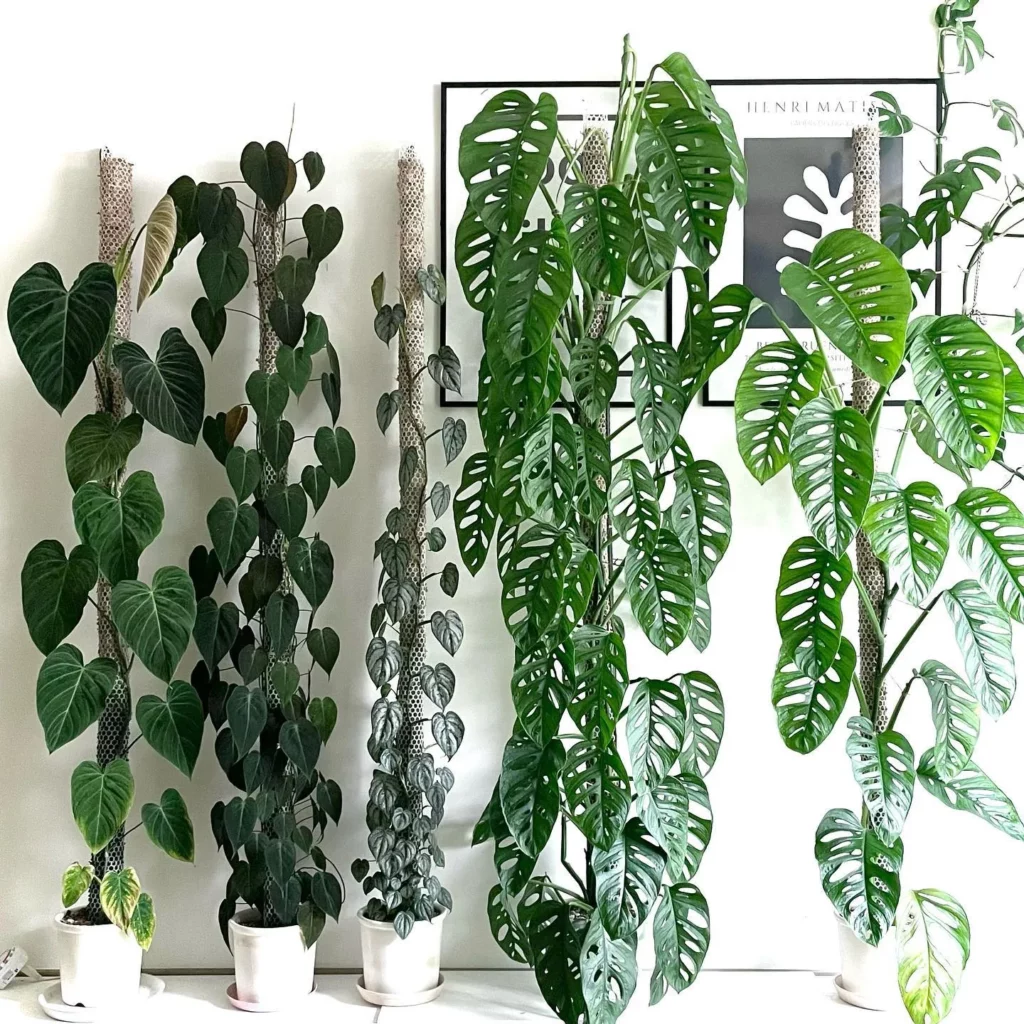
To promote rapid growth in your philodendron, it’s important to provide proper growing conditions. Mimic its natural tropical environment by providing warmth, moisture, and plenty of indirect sunlight. Avoid direct sunlight as it can burn the leaves. Wipe dust off the leaves regularly and consider placing the plant outside in a shady spot to get fresh air and natural light during warm weather.
Creating an environment that mimics the tropical conditions philodendrons thrive in will ensure optimal growth and overall health. Here are some essential care tips:
1. Temperature:
Philodendrons prefer temperatures between 65-85°F (18-29°C). Make sure to keep your philodendron in a warm location away from drafts or cold air.
2. Humidity:
These plants thrive in high humidity environments. If your home is dry, you can increase humidity by using a humidifier, placing a tray of water near the plant, or misting the leaves regularly.
3. Watering:
Water your philodendron when the top inch of soil feels dry to the touch. Provide enough water to thoroughly moisten the soil, but avoid overwatering, as this can lead to root rot. Ensure that the pot has good drainage to prevent waterlogging.
4. Soil:
Use well-draining potting soil that retains moisture without becoming overly soggy. A mixture of peat moss, perlite, and regular potting soil works well. Avoid heavy soils that can cause water to accumulate around the roots.
5. Fertilizer:
Feed your philodendron with a balanced liquid fertilizer every 4-6 weeks during the growing season (spring and summer). Follow the instructions on the fertilizer packaging to ensure you’re using the correct amount for your plant.
6. Pruning:
Regular pruning helps promote bushier growth and keeps your philodendron looking neat. Prune back any leggy or overgrown stems to encourage new growth and maintain a desired shape.
| Aspect | Care Tips |
|---|---|
| Light | Provide bright, indirect sunlight. Avoid direct sunlight, as it can scorch the leaves. |
| Watering | Water when the top inch of soil feels dry. Avoid overwatering to prevent root rot. |
| Temperature | Maintain temperatures between 65-85°F (18-29°C). Protect from cold drafts. |
| Humidity | Create a humid environment by misting the leaves or using a humidifier. |
| Soil | Use well-draining soil that retains moisture without becoming waterlogged. |
| Fertilization | Feed with a balanced liquid fertilizer every 4-6 weeks during the growing season. |
| Pruning | Regularly prune to promote bushier growth and maintain desired shape. |
Light and Sun Exposure for Philodendrons

Philodendrons thrive in bright, indirect sunlight. They naturally grow in shaded areas under the canopy of trees, rarely experiencing direct sunlight. To ensure the optimal light exposure for your philodendron, place it near a window that receives bright, indirect light throughout the day.
Too little light can result in leggy growth, where the stems become long and weak with sparse foliage. On the other hand, exposing your philodendron to too much direct sunlight can cause the leaves to turn yellow and scorched, damaging the plant’s overall health.
To prevent these issues, it’s crucial to find the right balance of light for your philodendron. Bright indirect light, resembling the filtered light conditions found in its natural habitat, is ideal for promoting healthy growth and vibrant foliage.
Here are some tips to ensure proper light exposure for your philodendron:
- Place your philodendron near a window with bright, indirect light.
- Avoid placing your philodendron in direct sunlight, which can lead to sunburned leaves.
- If you notice your philodendron leaning towards the light source, rotate the pot every few weeks to promote even growth.
Watering and Soil Needs for Philodendrons



Proper watering and soil conditions are essential for the healthy growth of your philodendron. By following a consistent watering schedule and providing well-draining soil, you can ensure your plant thrives.
Watering Schedule
Water your philodendron when the top inch of soil has dried out. This allows the roots to receive adequate moisture without being submerged in water. Overwatering can lead to root rot and other problems, so it’s important to avoid soggy soil. Stick your finger into the soil to check for dryness before watering.
Well-Draining Soil
Philodendrons prefer well-draining soil that allows excess water to flow freely. Choose a potting mix specifically formulated for houseplants, or create your own by combining equal parts peat moss, perlite, and potting soil. This combination promotes good drainage and aeration, preventing waterlogged soil that can harm the roots.
Replacing Soil Periodically
It is recommended to replace the soil in your philodendron’s pot every couple of years. Over time, the soil can become compacted and lose its ability to provide adequate drainage and nutrients. Replacing the soil periodically helps prevent salt buildup, which can cause leaf browning and yellowing. Remove the plant from its current pot, gently shake off the old soil, and repot with fresh soil.

Temperature and Humidity Requirements for Philodendrons

Proper temperature and humidity are essential for the health and growth of your philodendrons. Understanding the temperature tolerance and humidity needs of these plants will help you create the optimal conditions for their well-being.
Philodendrons prefer temperatures above 55 degrees Fahrenheit (13 degrees Celsius). They are tropical plants and thrive in warm environments. It is important to protect them from cool drafts, as low temperatures can cause stress and hinder their growth.
In terms of humidity, philodendrons prefer medium levels. Mimicking their natural tropical habitat will keep them happy and thriving. There are a few ways to achieve the right humidity for your philodendron:
- Consider using a humidifier in the room where the philodendron is located. This will help maintain a consistent level of humidity throughout the day.
- Misting the leaves regularly with water can also increase humidity around the plant. Pay special attention to the underside of the leaves, as this is where the plant absorbs moisture.
- Another method is to place the pot on a tray filled with pebbles and water. This creates a humid microclimate around the plant. Ensure that the bottom of the pot does not touch the water, as this can lead to root rot.
| Temperature | Humidity |
|---|---|
| Above 55 degrees Fahrenheit (13 degrees Celsius) | Medium humidity levels |
Fertilizing Philodendrons for Optimal Growth



To ensure optimal growth for your philodendrons, it’s important to provide them with the right nutrients through fertilization. Fertilizing your philodendron on a regular schedule can help promote healthy and vigorous growth, ensuring that your plant thrives and flourishes.
During the spring and summer months, when your philodendron is in its active growing phase, it’s recommended to fertilize it monthly. Choose a balanced liquid fertilizer that contains equal amounts of nitrogen (N), phosphorus (P), and potassium (K). These essential nutrients play a crucial role in plant growth and development.
When applying the fertilizer, it’s essential to follow the product instructions for the correct amount. Over-fertilizing can lead to nutrient imbalances and damage the plant. Be sure to measure and mix the fertilizer according to the package directions to avoid any potential harm to your philodendron.
As the fall and winter seasons approach, reduce the frequency of fertilization to every six to eight weeks. During this period, your philodendron’s growth slows down, and it requires fewer nutrients. Adjusting the fertilizing schedule accordingly prevents over-fertilization and allows the plant to rest and prepare for its next growth spurt.
| Season | Fertilizing Frequency |
|---|---|
| Spring and Summer | Monthly |
| Fall and Winter | Every 6-8 weeks |
Popular Types of Philodendrons for Fast Growth
If you’re looking for fast-growing philodendron varieties that can quickly fill your home with lush foliage, there are several options to consider. These varieties not only provide a vibrant and exotic look but also thrive in the right conditions, making them perfect for indoor spaces.
No products found.
Heartleaf Philodendrons

One popular fast-growing variety is the heartleaf philodendron. With its heart-shaped leaves and trailing vines, it adds a touch of elegance to any space. Heartleaf philodendrons thrive in bright light and require high humidity to promote their rapid growth. They are excellent choices for hanging baskets or as trailing plants.
Philodendron Scandens
An equally fast-growing variety is the Philodendron scandens, also known as the sweetheart plant. Its deep green heart-shaped leaves create a lush and attractive display. Philodendron scandens thrives in bright, indirect light and can tolerate lower light conditions. It is a versatile plant that can be grown in hanging baskets or trained to climb with support.
Philodendron Erubescens
The Philodendron erubescens, commonly referred to as the blushing philodendron, is another fast-growing variety. It features large, glossy leaves with a reddish hue, which intensifies in brighter light. Philodendron erubescens prefers bright, indirect light and high humidity. This stunning variety adds a pop of color and drama to any indoor space.
Philodendron Melanochrysum
The Philodendron melanochrysum is a highly sought-after variety known for its large velvety leaves. Its rich green color and unique texture make it a standout choice for plant enthusiasts. This fast-growing philodendron thrives in bright, indirect light and high humidity. Philodendron melanochrysum is ideal for creating a tropical and exotic ambiance in your home.
| Philodendron Varieties | Growth Rate | Light Requirements | Ideal for |
|---|---|---|---|
| Heartleaf Philodendron | Fast | Bright, indirect light | Hanging baskets, trailing plants |
| Philodendron Scandens | Fast | Bright, indirect light | Hanging baskets, climbing with support |
| Philodendron Erubescens | Fast | Bright, indirect light | Adding color and drama to indoor spaces |
| Philodendron Melanochrysum | Fast | Bright, indirect light | Creating a tropical and exotic ambiance |
Propagating Philodendrons for More Plants



If you want to expand your collection of philodendrons or share plants with friends, propagating them is a great option. Philodendrons are relatively easy to propagate using two methods: stem cuttings and division.
No products found.
Stem Cuttings: To propagate a philodendron using stem cuttings, follow these simple steps:
- Select a healthy stem and cut a 6-inch section just below a node, where the leaf attaches to the stem.
- Remove the lower leaves from the cutting, leaving only a few near the top.
- Place the cutting in a container of water, making sure the nodes are submerged.
- Find a bright spot, away from direct sunlight, and allow the cutting to develop roots. This process usually takes a few weeks.
- Once the roots are well-developed, transfer the cutting to a pot filled with moist, well-draining soil.
Division: Another method for propagating philodendrons is through division. Here’s how to do it:
- Carefully remove the philodendron from its pot.
- Inspect the plant for natural separations or plantlets with their own roots.
- Gently separate these plantlets from the main plant, making sure each one has its own root system.
- Plant each plantlet in its individual pot, using a similar soil mix as the parent plant.
- Water the newly transplanted plantlets thoroughly and place them in a warm and bright location, but not in direct sunlight.
| Method | Pros | Cons |
|---|---|---|
| Stem Cuttings | – Easy to do – Can produce multiple plants from a single cutting – Faster results compared to division | – Requires patience for root development – Some varieties may be more challenging to root |
| Division | – Plantlets have established roots – Plants are already adapted to their growing conditions | – May not be suitable for all philodendron varieties – Can damage the main plant if not done carefully |
Growing Philodendrons from Seeds

Growing philodendrons from seeds is a slow but rewarding process that allows you to observe and nurture the development of these beautiful plants from the very beginning. While stem cuttings are a popular method for propagating philodendrons, growing them from seeds offers a unique experience and the opportunity to witness the growth from seed to plant.
To start growing philodendrons from seeds, you’ll need to create the optimal conditions for germination and early growth. Here’s a step-by-step guide to get you started:
Step 1: Gathering and Preparing Seeds
Obtain philodendron seeds either from a reputable plant nursery or by collecting them from mature philodendron flowers. Make sure the seeds are fresh and viable for better germination success.
Step 2: Choosing the Right Soil Mix
Prepare a well-draining soil mix suitable for starting seeds. A mix of peat moss, perlite, and vermiculite or a commercial seed-starting mix can provide the necessary drainage while retaining moisture.
Step 3: Planting the Seeds
Fill a small seed tray or individual pots with the soil mix. Plant the philodendron seeds at a depth of about 1/4 inch, covering them lightly with soil. Space the seeds apart to provide enough room for growth.
Step 4: Providing Optimal Conditions
After planting the seeds, cover the tray or pots with a plastic dome or clear plastic wrap to maintain humidity. Place them in a warm and bright location, but out of direct sunlight.
Step 5: Maintaining Moisture Levels
Keep the soil consistently moist by misting it with water or lightly watering from the bottom. Avoid overwatering, as it can lead to fungal growth or root rot. Monitor the moisture levels regularly.
Step 6: Germination and Early Growth
Germination can take anywhere from two to eight weeks, depending on the temperature and seed viability. Once the seedlings emerge, remove the plastic cover and provide bright, indirect light for healthy growth.
Step 7: Transferring to Individual Pots
When the seedlings have developed a few sets of true leaves, carefully transplant each seedling into its own pot filled with well-draining soil. This will allow optimal root development and prevent root entanglement.
| Step | Description |
|---|---|
| 1 | Gather and prepare fresh philodendron seeds |
| 2 | Choose a well-draining soil mix |
| 3 | Plant the seeds at a depth of 1/4 inch |
| 4 | Provide optimal conditions for germination |
| 5 | Maintain moisture levels in the soil |
| 6 | Monitor germination and early growth |
| 7 | Transplant seedlings to individual pots |
Repotting Philodendrons for Better Growth



Repotting your philodendron is an essential step for ensuring its continued growth and vitality. Over time, the roots of your plant will outgrow their current pot and may even start poking out of the drainage holes. These are clear signs that it’s time to repot your philodendron and provide it with a larger, more suitable home.
No products found.
When choosing a new pot for your repotting endeavor, opt for one with good drainage to prevent waterlogged soil. Philodendrons thrive in well-draining soil, so ensure the new pot has ample drainage holes. Additionally, select a pot that is slightly larger than the current one, allowing room for the roots to spread and grow.
When repotting your philodendron, use well-draining soil specifically formulated for houseplants. This type of soil allows excess water to flow freely, preventing root rot and other moisture-related issues.
It’s important to repot your philodendron when you notice signs such as slow growth, quick drying soil, and roots beginning to escape from the pot. By repotting, you provide your plant with a fresh start and promote healthier growth and development.
Caring for Philodendrons During Winter

If you live in a non-tropical zone, you’ll need to overwinter your philodendrons indoors. To ensure their well-being during the colder months, there are a few important considerations to keep in mind.
Firstly, it’s crucial to reduce watering during winter. Philodendrons require less water during their dormant period, so allow the top inch of soil to dry out before watering. Overwatering can lead to root rot and other issues.
Additionally, it’s a good practice to trim off any yellowing leaves or long stems. This helps redirect energy towards healthier growth and maintains the overall appearance of the plant.
During the winter months, it’s essential to regularly check your philodendron for signs of mold, decay, and pests. Inspect both the leaves and the soil for any indications of problems. Catching these issues early can prevent them from spreading and causing serious harm to your plant.
Provide adequate light for your indoor philodendrons. These plants require bright, indirect light to thrive. Consider placing them near a window that receives ample natural light, but be cautious of direct sunlight, as it can scorch the leaves.
Lastly, ensure that the temperature remains consistently warm for your philodendrons during winter. They prefer temperatures above 55 degrees Fahrenheit, so avoid placing them in drafty areas or near cold windows.
| Winter Care Tips for Philodendrons | |
|---|---|
| 1. Reduce watering and allow the top inch of soil to dry out. | |
| 2. Trim off yellowing leaves and long stems. | |
| 3. Check for mold, decay, and pests regularly. | |
| 4. Provide bright, indirect light for your philodendrons. | |
| 5. Keep the temperature consistently warm (above 55 degrees Fahrenheit). |
Common Pests and Diseases for Philodendrons



While philodendrons are generally disease-resistant, they can still be susceptible to common houseplant pests. The presence of pests can hinder the growth and overall health of your philodendron. By properly understanding how to prevent and control infestations, you can ensure the well-being of your plant.
The most common pests that can affect philodendrons include aphids and mealybugs. Aphids are tiny, soft-bodied insects that feed on the sap of plants. Mealybugs are small, white, cottony insects that often hide in crevices and leaf axils.
Regularly inspect your philodendron for any signs of pests. Look for small insects, sticky residue on the leaves (indicating honeydew secretion), or distorted or discolored foliage. If you spot any pests, you can remove them manually using a soft cloth or a cotton swab dipped in rubbing alcohol.
Prevention and Control
Preventing infestations is key to keeping your philodendron healthy and pest-free. Here are some preventive measures you can take:
| Prevention and Control Tips |
|---|
| Keep your philodendron clean by regularly wiping the leaves with a damp cloth to remove dust and debris. |
| Isolate any new plants before introducing them to your philodendron collection to prevent potential infestations. |
| Quarantine infected plants to prevent the spread of pests to healthy plants. |
| Avoid overwatering your philodendron, as excessive moisture can create a favorable environment for pests. |
However, even with proper prevention, pests may still find their way to your philodendron. In such cases, you can resort to natural pest control methods. Two effective treatments for many philodendron pests are neem oil and insecticidal soap.
No products found.
Neem oil is derived from the seeds of the neem tree and acts as both an insect repellent and pesticide. It disrupts the pests’ feeding and breeding habits, effectively controlling their population. Insecticidal soap, on the other hand, suffocates pests by coating their bodies and blocking their respiratory system.
Remember to always follow the instructions on the product labels when using neem oil or insecticidal soap. Apply these treatments when the plant is in its active growth phase and avoid using them during periods of high temperature or excessive sunlight.
Another natural approach to pest control is introducing carnivorous insects, such as ladybugs, into your philodendron’s environment. Ladybugs feed on aphids and other small pests, helping to maintain a healthy balance in your plant’s ecosystem.
Proper Care and Maintenance
While preventive measures and natural pest control methods are effective, the best defense against pests is maintaining proper care and plant health. A healthy philodendron is less susceptible to infestations.
Ensuring the following practices can reduce the risk of pests and diseases:
| Proper Care and Maintenance Tips |
|---|
| Provide your philodendron with the correct amount of light, water, and humidity. |
| Avoid over-fertilizing your philodendron, as excessive nutrients can attract pests. |
| Regularly prune and remove dead or diseased foliage to improve air circulation and prevent pests from hiding. |
| Maintain good overall hygiene in the area where your philodendron is located. |
Common Misconceptions About Philodendrons

Philodendrons are often misunderstood, leading to misconceptions about their growth requirements. Let’s debunk some common myths and help you understand how to care for your philodendron properly.
Misconception 1: Philodendrons are slow growers
While some philodendron varieties may have a slower growth rate, most philodendrons are actually fast-growing plants. With the right conditions and care, they can put on impressive growth, adding a touch of greenery to your space in no time.
Misconception 2: All philodendrons require the same care
Each philodendron variety has its own unique growth requirements. It’s essential to understand the specific needs of your philodendron to ensure optimal growth. Factors such as light, water, temperature, and humidity can vary between varieties, so it’s important to research and provide the ideal conditions for your specific philodendron.
Misconception 3: Overwatering is a sign of proper care
Contrary to popular belief, philodendrons do not thrive in constantly moist soil. While they enjoy moderate soil moisture, overwatering can lead to root rot and other issues. It’s crucial to allow the top inch of soil to dry out between waterings to avoid waterlogged conditions. This balanced approach helps maintain healthy growth and prevents problems associated with overwatering.
Teaching Your Philodendron to Grow
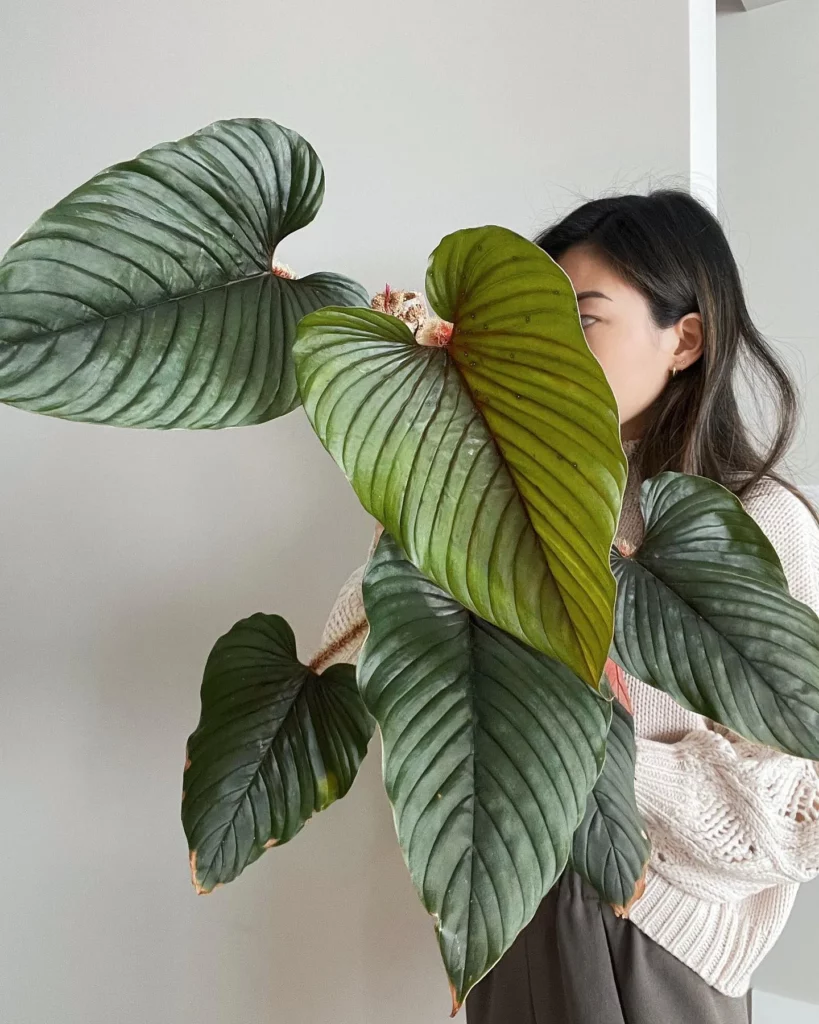
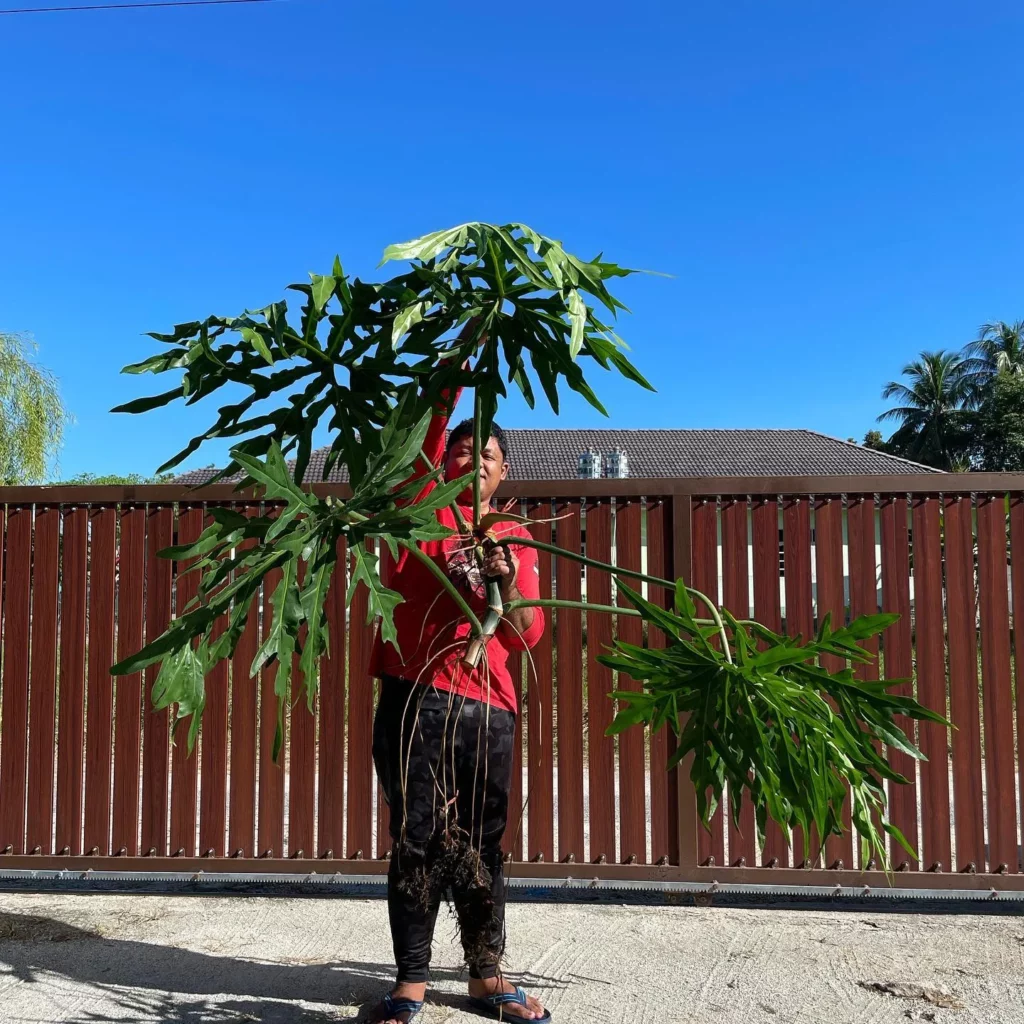
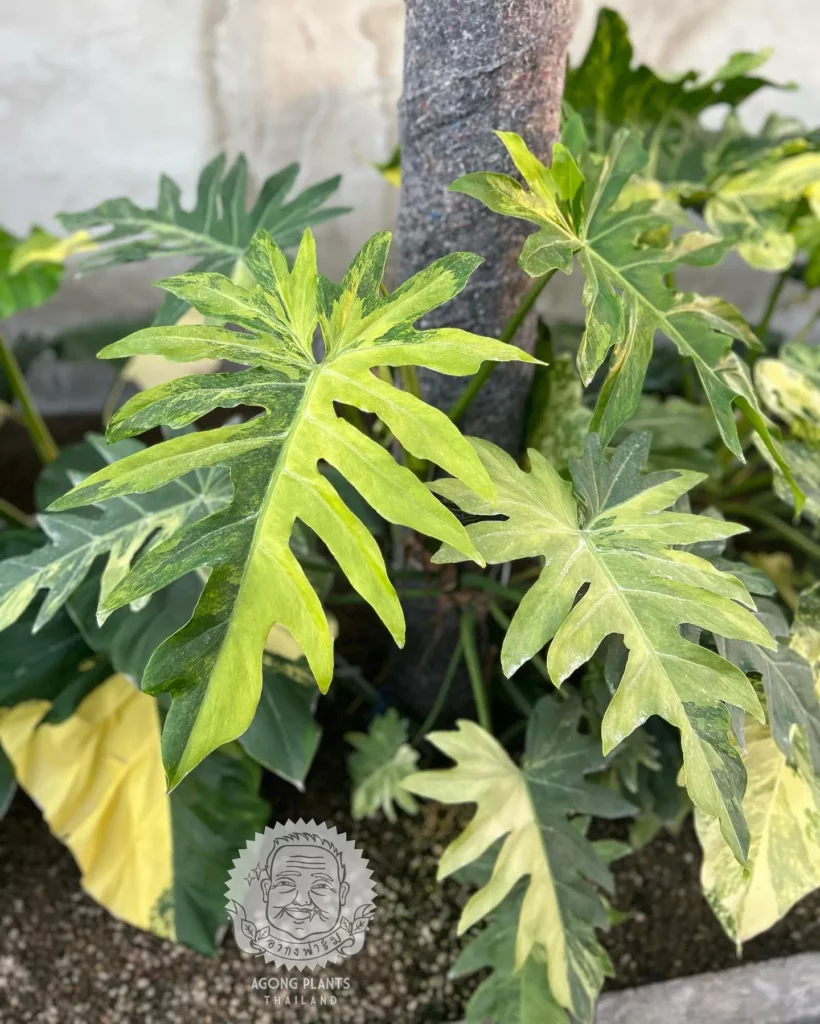
If you want to shape your philodendron and direct its growth, pruning and training are the key techniques to employ. By properly pruning your philodendron, you can stimulate new growth and encourage a bushier appearance. Start by cutting back vines to control the size and shape of the plant. When you make the cut, new growth will emerge from the nearest growth point above the pruning point.
When pruning your philodendron, consider the overall aesthetic you want to achieve. Use sharp, clean scissors or shears to make the cuts at a 45-degree angle. Removing any dead or damaged leaves and stems will not only enhance the plant’s appearance but also promote healthier growth. Pruning also helps to manage the plant’s size, ensuring it fits perfectly in your space.
Training your philodendron’s growth involves directing the new growth in specific directions. To do this, use plant ties or stakes to guide the vines or branches along a desired path. This will help your philodendron grow in a controlled manner, creating a more pleasing shape. By training your philodendron’s growth, you can also prevent it from becoming unruly or overwhelming your space.
Remember to be patient when training and pruning your philodendron. It may take time for the plant to respond to the changes you make, but with consistent care and attention, you’ll be able to shape and guide its growth to suit your preferences. By following these techniques, you can enjoy a well-groomed and healthy philodendron that enhances the beauty of your indoor or outdoor space.
FAQ
How fast do philodendrons grow?
Philodendrons are known for their fast growth rate, with some species capable of growing 2 to 4 inches per week during their active growing seasons.
What are the types of philodendrons?
There are two types of philodendrons to choose from: vining and non-climbing. Vining varieties grow several feet and usually require support to climb, while non-climbing varieties grow upright and are great for containers.
How can I promote rapid growth in my philodendron?
To promote rapid growth in your philodendron, it’s important to provide proper growing conditions. Mimic its natural tropical environment by providing warmth, moisture, and plenty of indirect sunlight.
How much light do philodendrons need?
Philodendrons thrive in bright, indirect sunlight. Place your philodendron near a window that receives bright, indirect light. Too little light can result in leggy growth, while too much direct light can cause leaves to turn yellow.
How often should I water my philodendron?
Water your philodendron when the top inch of soil has dried out. They like moderate soil moisture but do not tolerate sitting in soggy soil, which can cause root rot.
What type of soil should I use for my philodendron?
Use well-draining, acidic potting soil rich in organic matter. Replace the soil every couple of years to prevent salt buildup, as philodendrons are sensitive to salts.
What temperature and humidity levels do philodendrons prefer?
Philodendrons prefer temperatures above 55 degrees Fahrenheit and thrive in medium humidity levels. Protect them from cool drafts and consider using a humidifier or misting the leaves regularly.
How often should I fertilize my philodendron?
Fertilize your philodendron monthly during the spring and summer using a balanced liquid fertilizer. Follow the product label instructions. Reduce fertilizing to every six to eight weeks during the fall and winter.
What are some fast-growing philodendron varieties?
Some fast-growing philodendron varieties include heartleaf philodendrons, Philodendron scandens, Philodendron erubescens, and Philodendron melanochrysum. Each variety has unique characteristics and can add an exotic look to your space.
How can I propagate my philodendron?
Philodendrons can be propagated using stem cuttings or division. Cut a 6-inch section of the stem and place it in water until roots develop, then transfer it to moist soil. Divide your philodendron by removing plantlets with roots and transplanting them separately.
How do I grow philodendrons from seeds?
Growing philodendrons from seeds is a slower process. Plant the seeds in well-draining soil, cover with plastic to maintain humidity, and keep the soil moist. Once the seedlings sprout, transfer them to individual pots for optimal root development.
When should I repot my philodendron?
Repot your philodendron when the roots fill the pot and start poking out of the drainage holes. Signs that it’s time to repot include slow growth, quick-drying soil, and roots escaping from the pot.
How should I care for my philodendron during winter?
If you live in a non-tropical zone, you’ll need to overwinter your philodendrons indoors. Reduce watering during this time, check for mold and pests, provide adequate light, and keep the temperature consistently warm.
How can I prevent and control pests and diseases for my philodendron?
Philodendrons are generally disease-resistant but can be susceptible to common houseplant pests. Prevent and control infestations by regularly inspecting your plant, removing pests manually, and using natural pest control methods like neem oil and insecticidal soap.
What are some common misconceptions about philodendrons?
One common misconception is that all philodendrons are slow growers, but most philodendrons are actually fast-growing plants. Each variety also has specific care requirements and overwatering is often misunderstood as proper care, when philodendrons actually prefer moderate soil moisture.
How can I train my philodendron to grow in a specific direction?
You can train your philodendron to grow in specific directions by pruning and directing new growth. Pruning helps stimulate new growth and creates a bushier appearance. Cut back vines to control the size and shape of the plant.

